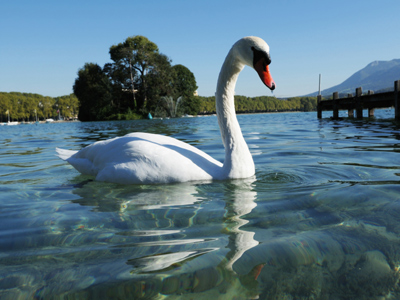The 'Vah' in vahana means 'to transport or to carry' and a vahana is a being - typically a mythical entity or an animal - which carries or pulls. Each particular god is believed to use a particular vahana. In this context, a vahana is generally called a god's mount. Upon this divine partnership between a god and his vahana, much mythology and iconography is woven. Often, the god is pictured mounted upon his vahana. The vahanas are also depicted at the god's side and symbolically represent the divine attributes. The mounts are also considered an accoutrement of the god. Although the vahana may work independently, they are symbiotic with the respective god or even functionally emblematic. The gods or goddesses may be seen standing beside or sitting upon their mounts.
Among the early Aryan gods to receive mounts were Agni, the god of fire (whose vahana was a sheep), Varuna, the god of water (naturally mounted on a crocodile), Vayu, the god of wind (appropriately astride an antelope) and the Moon who rides through the heavens on a deer.
Carnivores, the dreaded enemy of man and his cattle, came to be the mounts of the goddesses Durga and Kali. Such creatures' ferocity and strength made them an obvious accessory to the goddessess' destructive and demonic aspect and established their supreme power. Herbivores on the other hand, were associated with male gods. Nandi the bull is the vahana of Shiva and reflects his legendary virility.
The deer, consistently associated with Brahma, were also seen with Shiva who is frequently depicted holding a deer to signify his status as Pashupati, Lord of the Beasts.
Lord Vishnu soars above the earth on Garuda, the golden eagle-hawk, who is swifter than the wind and the sworn enemy of snakes. He has the head, wings and talons of a bird but the body of a man. A sense of power and strength is always evident in a depiction of Garuda.
Brahma's mount is the hamsa, variously interpreted as a swan or a goose. The bird was later also associated with Saraswati, the goddess of learning. Its veneration was believed to ensure success in every enterprise. Apart from its depiction with the deity, the hamsa also frequently adorns lamps, symbolising the goddess's capacity to dispel the darkness of ignorance.
Kartikeya, god of war, has a peacock for his vahana. This apparently incongruous relationship has been traced to the bird's formidable ability to destroy snakes.
Indra, king of the lesser gods and lord of rain, rides the elephant Airavata. Also allied with Lakshmi, goddess of prosperity, elephants were widely represented.
The river goddesses, Ganga and Yamuna, were appropriately mounted on a tortoise and a crocodile respectively. The fish, a symbol of fertility, (as are all aquatic creatures) was related to the god of love, Kama, and was often emblazoned on his banner. His consort, Rati (passion), was usually represented with a parrot. Commonly portrayed in erotic sculpture, this bird also indicated the mood of love.








